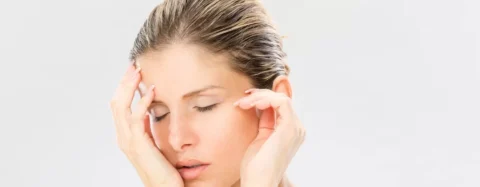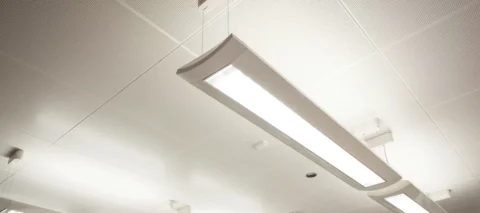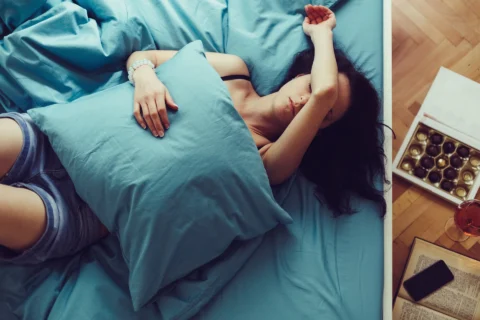The popularity of Botox has significantly grown over the years, and that’s not surprising at all considering all the benefits that the treatment provides. It allows you to look and feel younger by giving you a smooth and glowing complexion, especially for those who want to get rid of frown lines, crow’s feet, and forehead lines. More than this, it’s a non-surgical treatment, so there isn’t any downtime after the procedure as compared to facial plastic surgery.
So is Botox on Asian eyes safe? Botox is a totally safe treatment for any ethnic group. It’s just as effective for relaxing facial muscles, and you can most definitely get Botox if you have Asian eyes.
Is It Safe to Get Botox on Asian Eyes?
Botox is known to be totally safe, and that doesn’t change for people with Asian eyes. It’s an extremely safe treatment for any ethnic group, and those with Asian eyes can totally get Botox. After all, the same complaints about aging expressed by Westerners can also be expressed by Asians. It’s important to note, however, that there could be differences in terms of factors such as face shape. Chinese people, for example, may have a more prominent jaw muscle. Nonetheless, that doesn’t change the fact that Botox is a safe treatment for them.
Another reason why a lot of Asian women and men don’t believe that Botox is for them is that they rarely get wrinkles. However, Botox isn’t just for smoothing those out — it can also be for facial contouring and slimming.
That being said, Asian men and women can also get Botox in other areas. They tend to have a more rounded face due to where fat deposits around the eyes, cheeks, and mouth. And while this prevents them from having wrinkles, it’s also what keeps them from having their desired face shape. This is why a lot of Asian men and women want a V-shaped face (which eliminates puffy cheeks, double chin, etc.). Botox and fillers can contour their faces to make that V shape possible.
Botox, or botulinum toxin, works by relaxing the jaw muscles — making the chewing muscles become thinner. The treatment blocks nerve impulses, so your cheekbones elongate, and your face becomes lifted. This creates the top part of the V shape. Take note, however, that Botox results are only temporary. The effects of facial contouring and slimming can last up to 3 to 4 months at the start of your treatments. After several treatments every 4 months, the results can last longer.
As we discuss how Botox is possible for Asians, allow us to also emphasize that Botox isn’t just for women. Young Asian men are likely to get a Botox treatment to slim their faces. So to simplify: Botox is also great for Asians — both men and women.
Is Botox Going to Be Different if I Have Asian Eyes?
You may be wondering if being an Asian patient or having Asian eyes will lead to different Botox use. Asian patients usually have distinct facial features such as smaller eyes, and while Botox or Dysport can be used under the eyes, it’s not exactly using the same technique that would be used in Western patients.
According to some studies, Botox and Dysport must be used a little bit differently in Asian patients since the Asian eyelid is naturally smaller with different anatomy of fat. This would result in a less defined crease above the eyelashes (upper lid/upper eyelid crease).
For Asian women, a slightly lower dose should be used as it offers a better result as compared to the standard dose used in Caucasians. When it comes to the position of the Botox injection, it should also be different in Asians so they could achieve a more natural look.
Asian Skin and Face vs. Caucasian Skin and Face

When we give a cosmetic procedure to patients from a diverse population, whether it’s Botox, reconstructive surgery, cosmetic surgery, or injectable fillers/dermal fillers, we must understand their unique cosmetic concerns. Many publications on cosmetic procedures refer to Westerners, but we must take note that Asian patients differ when it comes to their preferences, structural facial anatomy, and degrees of aging.
Many Asian patients are pursuing cosmetic treatments. These treatments shouldn’t be viewed as an attempt to change their appearance to fit Western standards, but rather an enhancement of their Asian ethnic features.
Here are some notable differences between Asian and Caucasian skin and face:
Face
- Asian patients usually have a wider and shorter face. Their faces may look flatter with less brow, nose, and chin projection.
- Asians also usually have a greater mandibular width which contributes to a square lower face and a retruded chin.
- The Asian nose tends to be flatter with a wider base and less tip projection.
- Asians can have greater infraorbital volume and fuller lips. The ratio of their upper and lower lip is around 1:1.2, while the ratio for Caucasians is around 1:1.6.
Skin
- Asian skin has a greater dermal thickness, collagen content, and melanin when compared to Caucasians.
- Asian wrinkles normally manifest one to two decades later than in Caucasians of the same age.
- Asians tend to have denser fat which can reduce midfacial sagging for longer.
- Other possible causes for reduced skin aging in Asian patients are diets that are high in antioxidants, lessened smoking rates, and sociocultural factors such as skincare practices.
It’s essential to know the differences between Asian and Caucasian face and skin because it can help doctors formulate the best possible cosmetic treatment plan. Since Asians usually have a wider face with shorter vertical height and a flatter projection, many of them wish to have an oval facial shape.
What Other Cosmetic Procedures Can I Get if I Have Asian Eyes?

Having Asian eyes doesn’t mean your cosmetic options are limited. Asian eyelid surgery is defined as any surgery applied to the Asian eyelid/eye area. Here are other cosmetic procedures you can get for your Asian eye:
Asian Blepharoplasty/Asian Double Eyelid Surgery/Asian Eyelid Lift
Around 50% of those of East Asian descent have a skin fold or pretarsal crease above the eyelashes (You may see this as an eyelid fold). If you don’t have this crease, you may notice that much of your eye area is covered by skin (excess eyelid skin/excess skin), thus causing your eyes to look small. Your eyelashes that point downward may even poke into your eyes.
If that’s the case, the solution could be the Asian eyelid lift (also known as blepharoplasty or double eyelid surgery). It removes fat and skin and places stitches to make an additional upper crease in the eyelids. That way, a double eyelid is made.
Asian Rhinoplasty
Asian rhinoplasty refers to a set of rhinoplasty techniques usually requested among the Asian population. Rhinoplasty on Asians and rhinoplasty on Caucasians have the same goal: to build a natural-looking structure blending with the face. While the goal is the same, it’s important to understand that Asians normally require augmentation of the nose, while Caucasians normally require reduction.
Lower Eyelid Surgery
Lower eyelid surgery fixes issues with eye bags, loose skin, and dark circles. However, since eye sagging may occur due to fat deposition, simply removing the fat won’t solve the problem. The surgeon must examine if the facial bone structures underneath the lower eyelid are normal. The surgeon must also determine if the patient requires a fat removal or fat reposition.
Ptosis Repair
Ptosis is an eyelid condition associated with weakness in the eye-elevating muscle. Those with ptosis normally have droopy eyelids and often look sleepy and tired. Droopy eyelids can limit or deter the amount of color aspect shown in the eyes, which is why those who suffer from this condition appear tired all the time.
Epicanthoplasty
An epicanthoplasty aims to release (or partially release) an epicanthal fold. The epicanthal or Mongolian fold is the skin seen on the inner corner of the eyes of some Asian patients. It’s important to note, however, that epicanthoplasty isn’t always executed for its high chance of scarring after surgery.
How Does Botox Near the Eyes Work?

Now that we understand cosmetic procedures for Asian patients, let’s dive into how Botox works in general, specifically near the eyes.
Under the Eyes
Botox is essentially an effective treatment for wrinkles such as crow’s feet, forehead lines, and frown lines. However, even though Botox treatment has been used for these wrinkles since the late 1980s, not enough research has been done to declare Botox as effective for wrinkles and bags under the eyes. Botox injection under the eyes is not yet approved by the FDA.
Around the Eyes
Botox around the eyes is used to soften the appearance of crow’s feet and “11” lines. It also works by correcting asymmetric eyelids or eyebrows. The presence of fine lines or crow’s feet at the outer corners of the eyes, even when you’re not smiling, is often related to aging.
Between the Eyes
Glabella lines and frown lines are the wrinkles that appear between the eyebrows, giving you a tired and tensed look. Botox can smooth these frown lines and result in a more relaxed appearance.
Why Do People Get Botox Near the Eyes?
The obvious reason for getting Botox near the eyes would be for cosmetic purposes, but Botox can treat certain medical conditions as well, such as:
- Strabismus or lazy eye: This is an imbalance in strength in the muscles keeping the eyes focused. This condition can be caused by nerve damage around the eyeball or leading from the eye to the brain. Symptoms of this condition include impaired vision in one eye, double vision, eye strain, and lower depth perception. Botox is normally one of the last approaches to treating strabismus.
- Blepharospasm or eye twitching: Muscles near the eyelid can sometimes twitch involuntarily, also known as myokymia. It can involve the lower lid, upper lid, or both. While most only experience this once in a while, for others, they can become chronic and impact vision.
- Eye dryness or excessive tearing: Botox injections can help if there’s watering of the eyes through tear ducts. The treatment works by widening the area, making blockages move out or tears to move around them.
- Migraine: If you’re dealing with chronic migraine headaches, you may also be having trouble with light sensitivity and flashes of light. Botox can help treat your symptoms if you’re experiencing migraine headaches for 15 days or more in one month.
Learn more: What You Need to Know about Botox for Eyes Lift
Experience Safe and Effective Botox Treatments With Ethos Spa
Botox is one of the best choices to treat facial concerns especially when you don’t want to undergo Asian plastic surgery. It’s a great way to have a non-surgical brow lift or forehead lift and even address a droopy eyelid.
At Ethos Aesthetics + Wellness, we specialize in state-of-the-art aesthetic treatments for clients in New Jersey and other nearby areas. We promise to offer safe and effective solutions that meet your beauty expectations, and we offer advanced technologies and non-invasive treatments to enrich your skin. You won’t have to worry about safety because all our cosmetic procedures are performed by board-certified physicians. They’re highly trained and experienced as they create a personalized treatment plan specifically for you.
Aside from Botox, we also offer laser hair removal, CoolSculpting, lip injections, body contouring and fat reduction, and so much more. Experience confidence and beauty like no other with Ethos Aesthetics + Wellness.
Visit our website to book an appointment or call us at 908 – 365 – 0285 to learn more.







